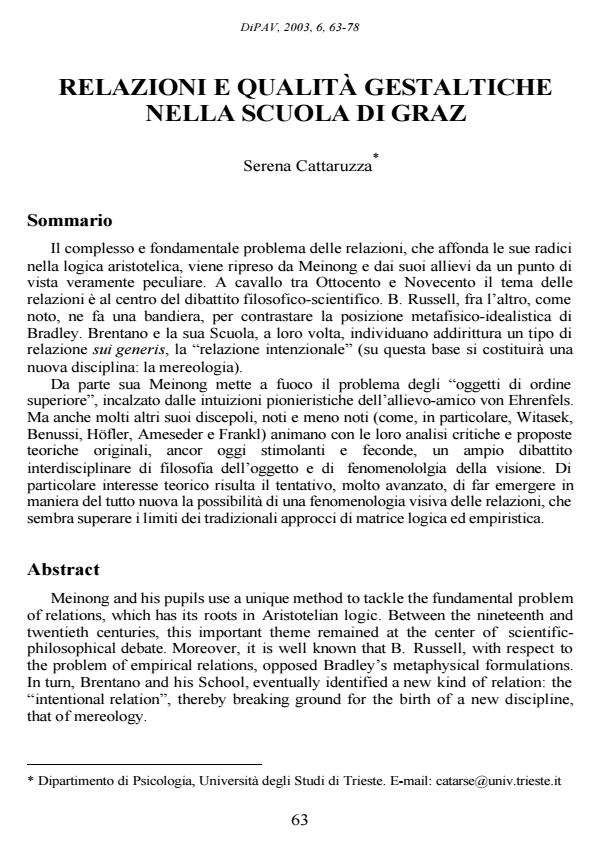Relazioni e qualità gestaltiche nella scuola di Graz
Journal title DiPAV - QUADERNI
Author/s Serena Cattaruzza
Publishing Year 2006 Issue 2003/6
Language Italian Pages 16 P. File size 189 KB
DOI
DOI is like a bar code for intellectual property: to have more infomation
click here
Below, you can see the article first page
If you want to buy this article in PDF format, you can do it, following the instructions to buy download credits

FrancoAngeli is member of Publishers International Linking Association, Inc (PILA), a not-for-profit association which run the CrossRef service enabling links to and from online scholarly content.
Meinong and his pupils use a unique method to tackle the fundamental prob-lem of relations, which has its roots in Aristotelian logic. Between the nine-teenth and twentieth centuries, this important theme remained at the center of scientificphilosophical debate. Moreover, it is well known that B. Russell, with respect to the problem of empirical relations, opposed Bradley’s meta-physical formulations. In turn, Brentano and his School, eventually identi-fied a new kind of relation: the intentional relation, thereby breaking ground for the birth of a new discipline, that of mereology. Meinong, for his part, brought the enigmatic problem of higher order objects into focus with the prophetic visions of his disciple and friend von Ehrenfels. Yet many other of Meinong’s famous and less-famous pupils (e.g., Witasek, Be-nussi, Höfler, Ameseder, and Frankl) enlivened the epistemological debate and promoted the growth of the phenomenology of vision. Of particular theoretical interest is the very advanced attempt to develop an idea of a vis-ual phenomenology of relations in a completely novel way, one which looks very promising for eventually surpassing the limits of the logical and em-pirical tradition.
Serena Cattaruzza, Relazioni e qualità gestaltiche nella scuola di Graz in "DiPAV - QUADERNI" 6/2003, pp , DOI: